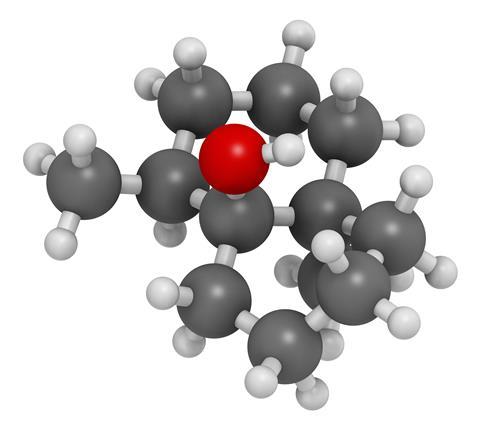Meera Senthilingam
This week, we get down to earth with Laura Howes
Laura Howes
It's a smell that I will forever associate with cold wet rugby games as our studs gripped into the pitch and the whistle blew. That unmistakeable smell of mud and earth that you might associate with weeding the garden or hiding from the rain; for me, it evokes fresh air, tackles and the promise of a pint in the clubhouse afterwards. And the main compound responsible, rather fittingly, is called geosmin: earth odour.

Geosmin is a terpene made by microorganisms in the soil, particularly the streptomyces family of bacteria that live in soil and decaying matter and produce most of our antibiotics. However, the biosynthesis of geosmin was only discovered in 2007 after the genetic code of Streptomyces coelicolor, a bacterium that munches on plant matter in the soil, was solved. It turns out that a single protein converts farnesyl diphosphate (a common starting material for the biosynthesis of terpenes) into germacradienol, a geosmin precursor, which then gets converted into geosmin. The first reaction occurs at one end of the enzyme and then the other side does the next transformation. The resulting molecule is a volatile bicyclic alcohol that you can smell at incredibly low concentrations, down to around 0.7 parts per billion. But why would you want to?

Apart from rugby fields, geosmin is the compound responsible for the earthy taste of beetroot and it can also find its way into freshwater fish, as well as wine. Somehow, what's tasty in beetroot isn't quite so good in other foods on your plate. Geosmin can be degraded with acid, which is why potentially muddy tasting freshwater fish are often liberally doused with lemon juice or vinegar. However, that option isn't really feasible for winemakers with geosmin-contaminated stock and so there's a great deal of research into other options for removing it from wine.
The most effective treatment for reducing the amount of geosmin in wine seems to be, rather fittingly, grape seed oil, with the oil acting as a solvent for the geosmin. Unfortunately, this treatment also seems to reduce the volatile aroma compounds that you probably want to keep in the wine as well. In fact, even though you can remove much of the geosmin, the reduction in other volatiles can actually make the geosmin even more pronounced. Now that the enzyme responsible for geosmin's production has been identified, the hope is that people can find a way of stopping it being produced in the first place, rather than unsuccessfully trying to remove it later on. That seems a little way off however.

The question remains, of course, why we are so sensitive to it, considering that we find the compound so distasteful in our food and drink. One theory is that we - or rather our ancestors - used the odour of geosmin to identify sources of water. That might seem unnecessary in the land of Wellington boots and a national obsession with the weather, but in more arid climes it could be a life saver. Keith Chater of the John Innes Centre in Norwich, one of the team who originally sequenced the genome of Streptomyces coelicolor, has suggested that camels might be so sensitive to geosmin that they can smell oases miles away, and track the scent to find water in the desert. The spores of the bacterium, in return, can then hitch a ride and travel to the next water hole.
You might not like it in your wine glass but geosmin is more than the smell of a wet rugby pitch: it could be the smell of survival.
Meera Senthilingam
Indeed. Chemistry World's Laura Howes there sniffing out the chemistry of geosmin, a compound holding the key to hydration in desperate times. Next week, we enter another story of survival.
Phil Robinson
On a field trip with a local geology professor, our schoolboy protagonist, Scoops Traylor, uncovers a Native American idol, somewhat improbably made of pure uranium. Unbeknown to Scoops and the rest of the group, one of the boys can't resist pocketing a fragment and the light-fingered lad is later discovered in the throes of acute radiation poisoning.
Happily, Scoops - the precociously resourceful son of a physicist - is quick to recall how his father's lab deals with fissile fouling: 'At Dad's laboratory, the technicians use a solution called versene to wash radioactive contamination off their equipment.'
And the compound responsible for versene's versatility is ethylene diamine tetraacetic acid, or EDTA.
Meera Senthilingam
And you can find out what happens in that tale, as well as the chemistry behind this cleansing compound, by joining Phil Robinson in next week's Chemistry in its element. Until then, thank you for listening, I'm Meera Senthilingam.













No comments yet